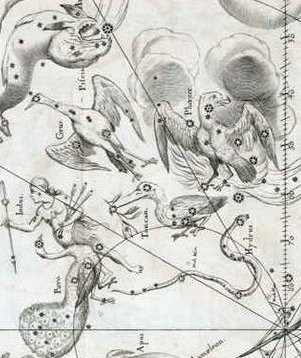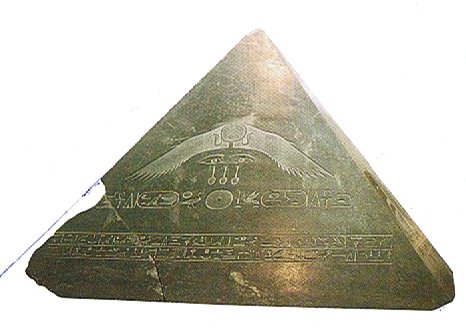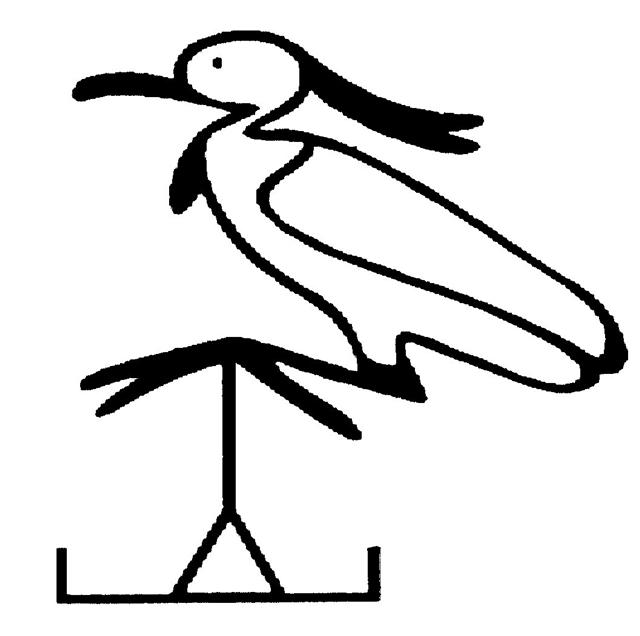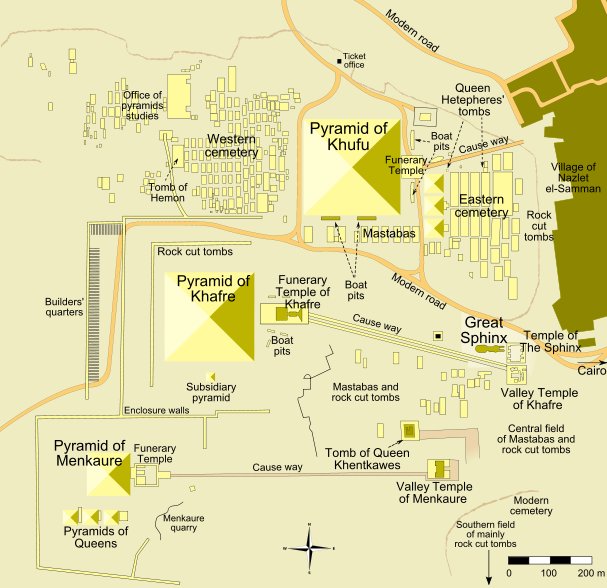I have decided to eliminate the Wikipedia manzil dates from my presentations of the glyph text; the quality of the data appears to be unacceptable. Once again the beginning of side b:
The beginning of side b coincided not only with the heliacal risings of the Pair of Signs (Al Sharatain, β and γ Arietis), but also with the day when - in rongorongo times - Polaris (α Ursae Minoris) rose with the Sun. My 'upgraded' manzil calendar below indicates how the RA day number 27.4 for Sheratan can be correlated with the RA values for the stars in the following manazil in order to generate whole numbers for the distances between them. All the first 7 manazil can be assigned RA dates with the fraction .4 as if inherited from that of the heliacal rising of Sheratan:
The White Spot (Al Hak'ah) is a special case, because none of its 3 stars has the Sheratan fraction. But in my judgment this is no great problem - the exact position of the 'fire' can be regarded as hidden beneath the 'cooking tripod' (athāfiyy): ... λ and the two stars phi furnish an easy refutation of the popular error as to the apparent magnitude of the moon's disc, Colas writing of this in the Celestial Handbook of 1892: In looking at this triangle nobody would think that the moon could be inserted in it; but as the distance from λ to φ¹ is 27', and the distance from φ¹ to φ² is 33', it is a positive fact; the moon's mean apparent diameter being 31' 7''. This illusion, prevalent in all ages, has attracted the attention of many great men; Ptolemy, Roger Bacon, Kepler, and others having treated of it. The lunar disc, seen by the naked eye of an uninstructed observer, appears, as it is frequently expressed 'about the size of a dinner-plate', but should be seen as only equal to a peppercorn ... The beginning of side b seems to have been ordered by the heliacal risings of important stars, but I have anyhow kept the nakshatra view (184 days later = 181 days earlier) because the pictures in a mirror can give additional information regarding the heliacal view. For instance were in April 21 the stars of the manzil Al Ghafr close to the Full Moon, a date when also the Hindu lunar station Svāti and the Chinese Neck were beginning:
In order to distinguish the Hindu ruling stars from the rest I intend to use Capital Letters, e.g. ARCTURUS. Al Ghafr means the 'Covering' which we immediately can recognize as the nightside reflection of the 'hidden fire' at Al Hak'ah - the same name as Heka for λ Orionis:
Wikipedia has no information regarding the origin of the Phoenician lamedh, but the Egyptian 'cloth' hieroglyph (menchet) is - I suggest - related to the 4 upside down sky pillars. I.e. the basic element of the 'covering' hieroglyph could have indicated darkness:
... Phoenix, the French Phénix, the German Phönix, and the Italian Fenice, is one of Bayer's new figures, between Eridanus and Grus, south of Fornax and Sculptor, - its α, κ, μ, β, ν, and γ in a line curving toward the south like that of a primitive Boat, by which figure, as Al Zaurak, the Arabs knew them.
Al Sufi cited another name, - Al Ri'āl, the Young Ostriches, - which Hyde wrongly read Al Zibal, perhaps a synonymous title; and Kazwini used Al Sufi's term in describing some stars of Al Nahr, the River, in which our Phoenix was then included by Arabian astronomers. Others changed the figure to that of a Griffin, or Eagle, so that the introduction of a Phoenix into modern astronomy was, in a measure, by adoption rather than by invention. But, whether Bayer knew it or not, his title is an appropriate one, for with various early nations - at all events, in China, Egypt, India, and Persia - this bird has been 'an astronomical symbol of cyclic periods', some versions of the well-known fable making its life coincident with the Great Year of the ancients beginning at noon of the day when the sun entered among the stars of Aries; and, in Egypt, with the Sothic Period when the sun and Sirius rose together on the 20th of July. Thompson further writes of this: A new Phoenix period is said to have commenced A.D. 139, in the reign of Antoninus Pius; and a recrudescence of astronomical symbolism associated therewith is manifested on the coins of that Emperor. Coincidently, Ptolemy adopted as the epoch of his catalogue the year 138, the first of Antoninus. With the Egyptians, who knew this bird as Bennu and showed it on their coins, it was an emblem of immortality; indeed it generally has been such in pagan as well as Christian times ... ... Manu-tera, the Easter Island name for the sooty tern, means literally 'sunbird'. From this we take it as very likely, though there is no proof, that the tern would have been seen as a symbol of the sun - just as the falcon and the phoenix were symbols of the sun in ancient Egypt. The latter, the mythical Bennu bird, was associated with Heliopolis ('the City of the Sun') and with the pyramid-shaped Benben sunstone, and was famously linked to an egg: As its end approached the phoenix fashioned a nest of aromatic boughs and spices, set it on fire, and was consumed in the flames. From the pyre miraculously sprang a new phoenix, which, after embalming its father's ashes in an egg of myrrh, flew with the ashes to Heliopolis where it deposited them on the altar in the temple of the sun god Ra. The possibility cannot be ruled out that the birdman cult of Easter Island may have expressed ideas such as these. 'If one were to propose antecedents to the practice', comments the historian R. A. Jairazbhoy: the thought of the Egg of the Egyptian sun god (the cosmic egg) would have to come to mind. The Book of the Dead says that this egg was laid by Kenkenur, or 'the Great Cackler' (an alias of the phoenix), and the deceased watches and guards it. This is declared in the Chapter headed 'Having Dominion over the Water in the Underworld'. And again the journey on the reed float across the sea is reminiscent of the journey of the Egyptian sun god Ra to the horizon on reed floats ... ... True pyramids (at least the larger ones), as opposed to step pyramids in Egypt were topped by a special stone called a pyramidion, or sometimes a capstone, which was itself a miniature pyramid. It brought the pyramid structure to a point at the same angle and the same proportions as the main body. Actually, the ancient Egyptian word for the pyramidion, which could also sit atop the apex of an obelisk, was ben-benet, named for the sacred ben-ben stone kept in the temple of Heliopolis, the oldest center of the sun cult in Egypt. During the Old Kingdom, they were usually made of diorite, granite or a very fine limestone which was then covered in gold or electrum. By the Middle Kingdom and the end of the Pyramid Age, they were usually made of granite and inscribed with texts and symbols ...
... We should remember the bennu bird, first mentioned at Alrisha in connection with the Phoenix constellation and later at Baten Kaitos where it was compared to manu tara:
The feet of this bennu bird seem to illustrate the 4 lines joined at the top of a pyramidion. One of these lines is though its leg. In ancient Egypt there was also a special type of bird to indicate this, the benu bird (named phoenix by the Greeks). According to Wilkinson the benu bird was a heron (Ardea cinerea - cǐnis = ashes) and '... standing for itself on an isolated rock or on a little island in the middle of the water the heron was an appropriate image for how the first life appeared on the primary hill which arose from the watery chaos at the time of the original creation.' Similarly to the sun the heron rose up from the primary waters, and its Egyptian name, benu, was probably derived from the word weben, to 'rise' or 'shine'. This magnificent wader was also associated with the inundations of the Nile.' But herons have straight beaks in order to be able to harpoon frogs and fishes. The picture above, also from Wilkinson, instead suggests a slightly bent beak. As a symbol for the sun the heron was the sacred bird of Heliopolis [helios = sun, polis = city], which became the mythical phoenix of the Greeks. Without doubt through its association with the descending and rising sun the heron was comprehended as lord over the royal jubilee of rejuvenation, which was staged for a pharao who had reigned in thirty years ... It would be interesting to know what place in the Graveyard on the Egyptian Gizah plateau corresponds to the coordinates of the Heka athāfiyy and then to see what could be hidden beneath the surface of this White Spot::
| ||||||||||||||||||||||||||||||||||||||||||||||||||||||||||||||||||||||||||||||||||||||||||||||||||||||||||||||||||||||||||||||||||||||||||||||||||||||||||||||||||||||||||||||













